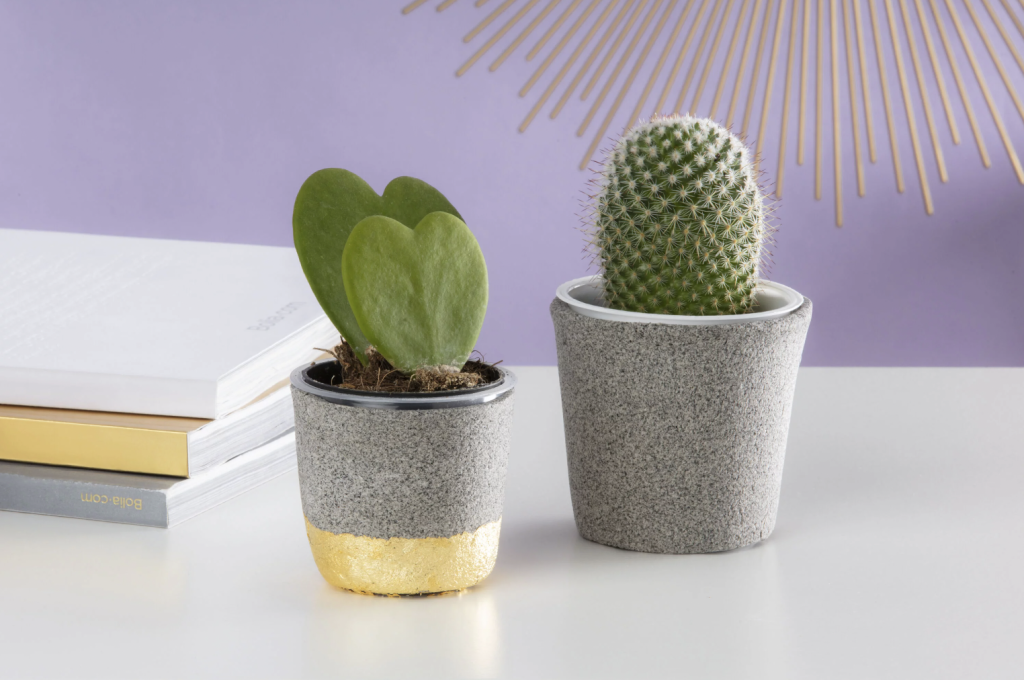You can find pots made from a wide range of materials, some of which may be better suited to your purposes. A drain in the bottom and a pot big enough to hold plant growth for the whole growing season are both necessities.
You should know this stuff if you want to start a wholesale business for mini flower pots. The most frequent choices are summarized here.
Materials Used in Pots
. Fiberglass
These containers are expensive because they are aesthetically pleasing, long-lasting, and lightweight. They’re perfect for fostering plant life. Because of their higher price, these pots are less readily available and come in fewer sizes and styles. The poor insulating properties of fiberglass extend beyond its fragility in the event of a drop.
. Foam
These inexpensive pots come in a wide range of shapes, sizes, and colors. They’re lightweight and useful for plant growth, particularly in climates where the insulation can protect the roots from extreme temperatures. Sizes are typically reduced because the material has low strength.
. Clay
Plants thrive in clay pots, which are also cheap, easy to find, and aesthetically pleasing. Large sizes, however, can be pricey and awkward to work with, break easily if dropped, and frost cracks easily. However, your clay pot will dry out more quickly than others because of the porous nature of clay. It also tolerates heat well, which is an advantage in the spring but a disadvantage in the summer. If you’re planning on spending more money on a pot, make sure it’s made of terracotta and has a frost-proof guarantee. Glazes and firing processes make for pots that can withstand the elements.
. Metal
Galvanized, brass or copper pots, and other metal containers are not only functional but also aesthetically pleasing. Metal tins or galvanized buckets can be made into more aesthetically pleasing containers by drilling drainage at the bottom of the pot. In general, their durability improves with increased metal thickness. Plants in plastic liners can be used in these pots as well. One of the drawbacks of metal is that it conducts heat and cold to the roots, but plastic liners prevent this.
. Plastic
Plants thrive in plastic pots due to their attractiveness, low cost, portability, and durability. There are, without a doubt, more appealing options than others. Some look like they were made from terracotta, concrete, or stone; others have rolled rims to make them appear thicker. The price of a larger size can be comparable to that of a pot made from more conventional material. The cost of a plastic item typically reflects its level of quality. Less expensive pots may fizzle and break over time, but polypropylene pots are more durable and, in some cases, better at insulating the contents inside.
One benefit of plastic is that it doesn’t need to be watered as often as clay does. Lighter-colored plastic containers retain heat better than their darker counterparts. Consider recycling the large, black nursery canisters typically used for trees and large shrubs if aesthetics is not a concern.
. Concrete
Attractive, long-lasting, and cheap concrete pots can be bought from both local, roadside shops that produce them and the most fashionable stores, which offer them in highly stylized forms. They aid in the growth of plants. Large ones can be prohibitively expensive and, without a doubt, cumbersome to move around the house or garden. Given their corporeal nature, you should regard them as irreversible.
Conclusion
Choosing the potting material for your garden can be distressing even more so if you are also particular about its aesthetics. But when comes to wholesale, you can confidently sell all varieties of pot materials to the many eager consumers who will undoubtedly be looking for them.

